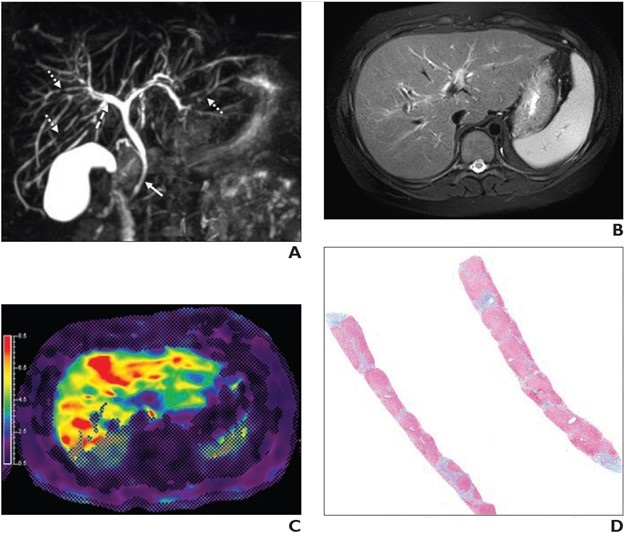Study Supports Use of MRE for Monitoring Pediatric Autoimmune Liver Disease

New research published in the American Journal of Roentgenology (AJR) supports the use of MR elastography (MRE) in noninvasive monitoring of liver stiffness—a surrogate for fibrosis—in children and young adults with autoimmune liver disease (AILD).
“MRE liver stiffness measurements were overall elevated in children and young adults with AILD, although were not significantly different between subsets of patients with primary sclerosing cholangitis (PSC)/autoimmune sclerosing cholangitis (ASC) and autoimmune hepatitis (AIH),” wrote first author and AJR Pediatric Imaging Section Editor Jonathan R. Dillman, MD, from Cincinnati Children’s Hospital Center.
Using an existing institutional registry of children and young adult patients diagnosed with AILD, ASC, or AIH, Dillman et al. identified those who underwent a research abdominal 1.5-T MRI that included liver MRE (performed for registry enrollment), as well as a clinically indicated liver biopsy within 6 months. Using a 2D gradient-recalled echo sequence for MRE, an analyst measured mean liver shear stiffness (kPa) for each examination. After recording laboratory markers—aspartate aminotransferase-to-platelet ratio index (APRI) and fibrosis-4 score (FIB-4)—of liver fibrosis, a pathologist determined histologic METAVIR liver fibrosis stage, blinded to clinical and MRI data.
Ultimately, MRE liver stiffness measurements showed strong correlations with both METAVIR (rho=0.68) and Ishak (rho=0.67) histologic fibrosis scores. Meanwhile, MRE liver stiffness demonstrated an AUC of 0.81 (95% CI: 0.67-0.91) for identifying advanced histologic liver fibrosis (F0-F1 vs F2-F4), with sensitivity of 65.4% and specificity of 90.0% at a cutoff of >3.29 kPa.
